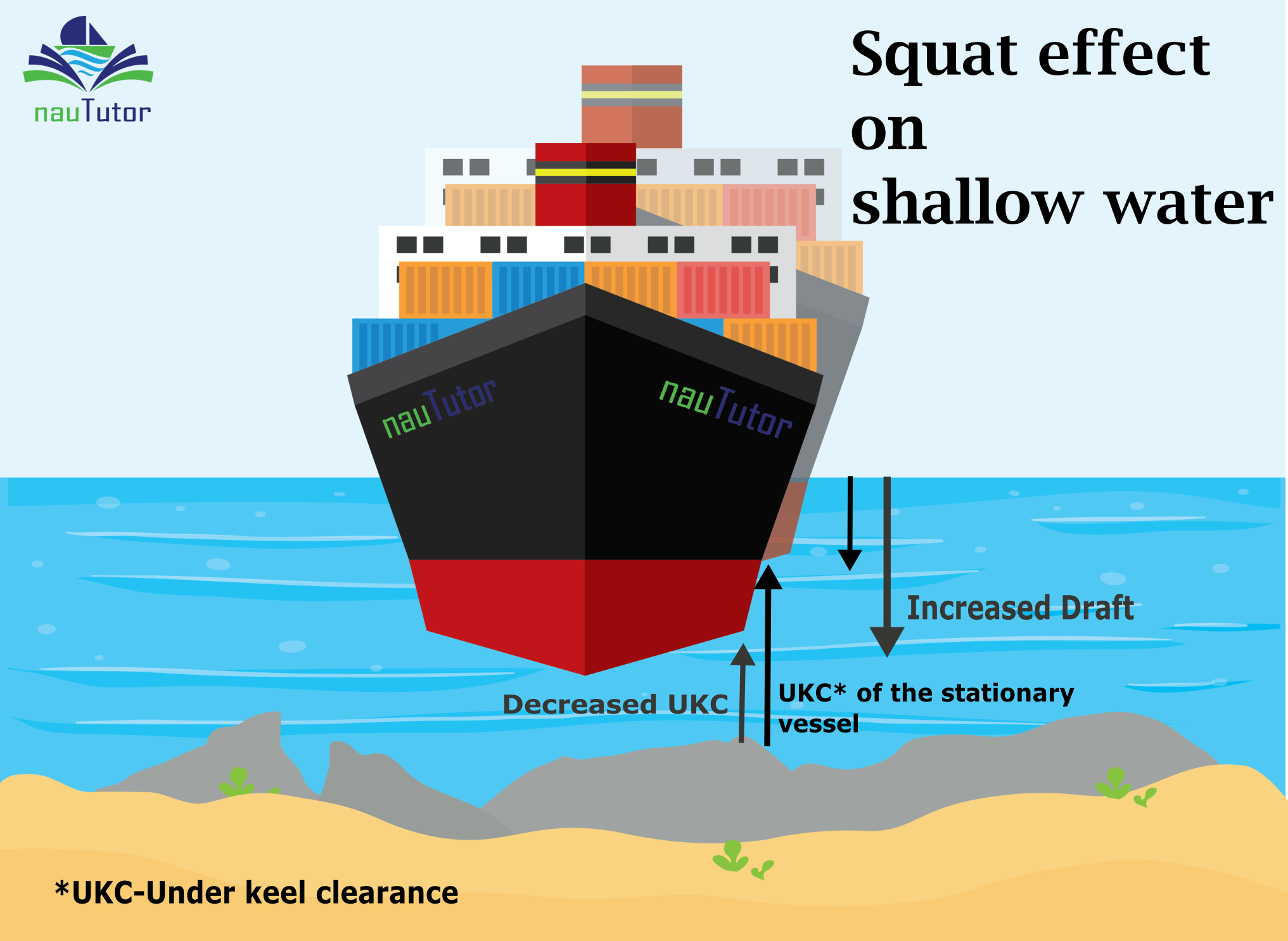Page Contents
Extra Knowledge In Nautical Science
 Tips: We sorted important topics below, it will help you out in exams. good luck
Tips: We sorted important topics below, it will help you out in exams. good luck
Before proceeding to squat we have to know what is shallow water,
Shallow Water
- Areas with depths less than 1.5 times of the deepest draft of the vessel the waters may be termed as shallow water
What is Squat? – Explanation of Squat effect at sea
- A ship proceeding through water pushes water ahead of her. This creates a void space immediately behind the vessel, which is gradually filled up with water from all around in the vicinity, water rolling down underneath the bottom and that flowing along the sides of the vessel. The process continues as long as the ship is making way through the water.
- In open seas, the effect does not necessarily cause great concern.
- In congested and shallow waters, the effect is predominant*, the reason being unavailability of sufficient water near the aft extremity of the vessel, to fill up the void. And hence this requires due attention and control measures to avoid any damages or accidents.
- The occurrence of squat is based on Bernoulli’s theorem.
So you understood the introduction to squat effect,
Squat
- If the ‘under keel clearance’ (UKC) is large, a vessel will manoeuvre as normally expected of her.
- When the UKC is low, the water displaced by the vessel’s movement through the water’ is not filled in immediately, creating a vacuum effect. The hydrodynamic forces created in such situations induce a suction effect on the vessel that not only pulls her bodily down to compensate for the vacuum or the low pressure created by the displaced water but also has an extremely detrimental effect on the vessels normal manoeuvring behaviour. This effect is called squat.
Or we can simplify this
- The water passing from forward towards aft underneath the vessel’s bottom moves at relatively higher speed, causing a low-pressure area underneath the vessel. This results in causing the vessel to sink downwards, causing a decrease in under-keel clearance of the vessel. This effect is called squat.
- A vessel becomes rather sluggish to manoeuvre when experiencing squat.
- The effect of squat will be more pronounced in the channel which is less wide.

Squat Effect on shallow water in a moving vessel
Squat Calculation
- Squat in Open Waters = (Cb x V ²) /100
Squat in shallow Waters = (Cb x V ²) /50
Cb = Block Coefficient of the vessel
S = Blockage factor or the vessel
V = Speed of the ship in knots
- The vessel manoeuvring booklet shall be referred for specific values of squat.
- It is preferred to have estimated squat values displayed on the bridge in tabular or graphical form for ballast/loaded and open/confined channels ready for use.
That’s all for today, hope you understood this topic. if you have any doubts about this topic come in the comment section.
*predominant – strongest
Thank you,
By Team Naututor


 Tips: We sorted important topics below, it will help you out in exams. good luck
Tips: We sorted important topics below, it will help you out in exams. good luck